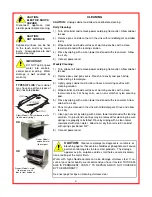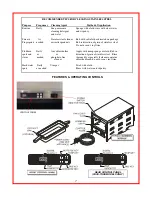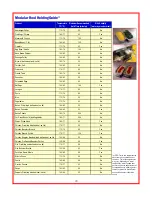
CLEANING
CAUTION:
Unplug cabinet and allow to cool before cleaning.
Daily Cleaning:
1) Turn off cabinet and remove power cord plug from outlet. Allow cabinet
to
cool.
2) Remove pans and clean them in the sink with mild detergent and allow
to
dry.
3) Wipe cabinet and inside surfaces of warming cavities with a clean
towel moistened with cleaning solution.
4) Rinse by wiping with a clean towel moistened with clean water. Allow
to air dry.
5) Connect power cord.
Weekly Cleaning:
1) Turn cabinet off and remove power cord plug from outlet. Allow cabinet
to
cool.
2) Remove pans and pan covers. Reach into cavity and push lid up
while sliding it toward you.
3) Lightly spray cabinet and inside surfaces of warming cavities with
cleaning
solution.
4) Wipe cabinet and inside surfaces of warming cavities with a clean
towel until clean. For heavy soils, use a non-scratch or nylon scouring
pad.
5) Rinse by wiping with a clean towel moistened with clean water. Allow
cabinet to air dry.
6) Pans may be cleaned in the sink with mild detergent. Rinse and allow
to air dry.
7) Clean pan covers by wiping with a clean towel moistened with cleaning
solution. On plastic lids, springs may be removed for cleaning; be sure
springs are properly reinstalled. Rinse by wiping with a clean towel
moistened with clean water. Allow to air dry then reinstall in cabinet
with springs positioned “UP”.
8) Connect power cord.
6
CAUTION:
ELECTRIC SHOCK
HAZARD
Disconnect appliance from
electric power before cleaning.
CAUTION:
HOT SURFACE
Exposed surfaces can be hot
to the touch and may cause
burns. Allow appliance to cool
before cleaning.
IMPORTANT:
DO NOT spill or pour
water into controls,
control panel or wiring. Water
damage is
not
covered by
warranty.
Oldest Models: Polycarbonate plastic
lid with metal springs
Newer Models:
notched metal
lid over pans
OR
TYPES OF LIDS
: Your cabinet
may have one of three types of
lids, illustrated below:
CAUTION:
Cleansers, detergents, degreasers, sanitizers, or
bleaching agents that contain chlorides or phosphates will cause
permanent damage to stainless steel products. The damage
appears as pits, eruptions, voids, small holes, severe discolora-
tion or dulling of the metal finish.
Water with high chloride content can also damage stainless steel. If un-
sure of your water quality, we recommend you have it tested. THIS DAM-
AGE IS PERMANENT, COSTLY TO REPAIR, AND IS NOT COVERED
BY THE WARRANTY.
See next page for tips on cleaning stainless steel.
OR
Newest Models: metal
lid over pans with
tabs in front and back






























